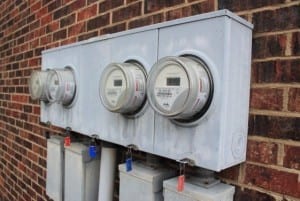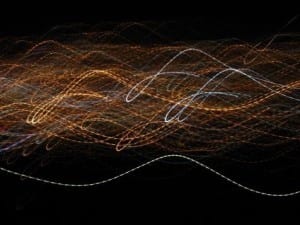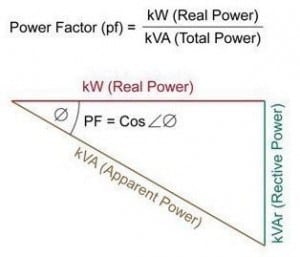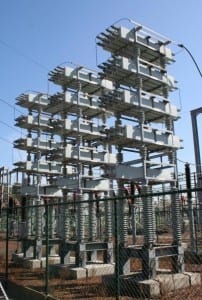Are You Being Overcharged by Your Energy Provider? Find Out!
 Everyone’s trying to lower their energy bill these days. If you’re a business owner, facilities manager or plant supervisor, your facility may be losing money owing to a little-understood line item on your energy bill—an uncorrected Power Factor. Why are you being charged this fee, and what can you do about it to cut your energy costs?
Everyone’s trying to lower their energy bill these days. If you’re a business owner, facilities manager or plant supervisor, your facility may be losing money owing to a little-understood line item on your energy bill—an uncorrected Power Factor. Why are you being charged this fee, and what can you do about it to cut your energy costs?
CAS DataLoggers presents our latest White Paper detailing how you can identify and use several techniques to remediate an uncorrected Power Factor.
What is an Uncorrected Power Factor?
Power Factor (PF) is the ratio of real power to the apparent power flowing to your facility’s electrical load from the local power grid. But why does having a low Power Factor raise your plant or factory’s power bills?
Reactive power (aka var or volt-ampere reactive) is present in an AC circuit when its current and voltage are not in phase. Think of reactive power as the unused part of apparent power (expressed in volt-amperes), which is the vectoral sum of the reactive power and the real power (in watts). Real power does the actual work in your facility.
Therefore, reactive power is the unused power your plant or factory is drawing from the power company. Unfortunately it comes at a surprisingly high cost to your business!
Why Is It Costing You Money?
Your facility’s Power Factor (PF) value is the metric of how efficiently its AC power system and equipment are actually using power. Power Factor is expressed as a percentage value between 0 and 100% (with 100% or 1.0 representing unity, i.e. power that is in alignment).
Power in an AC circuit is most efficiently used when the voltage and current are in alignment. However, in the real world, much of your electrical equipment is probably delaying as it draws current, meaning that the current and voltage are instead in misalignment. If this is in fact the case, then your equipment has a level of inefficiency depending on how misaligned it is, causing it to draw more current to operate.
As a result, your facility’s PF is below a certain level (typically 96%-95% for many power companies), your provider will charge you a reactive power fee. Power companies charge this extra fee for industrial and commercial customers because of the costs of their larger equipment and wasted energy, i.e. those customers who have a low power factor.
This means that–unless your facility can raise its Power Factor to 95-96% or above–you’ll continue to see this penalty charge every month on your bill. How expensive is this fee? Some businesses see charges as high as $15,000 or more! More often, a high power factor can result in your energy bills increasing by up to 20%, depending on which company is supplying your electricity.
How Do You Find Out YOUR Power Factor?
An AC circuit’s Power Factor is calculated using three aspects of its electrical power consumption:
- Real power (aka working power)—Power used to run equipment, expressed in kW (kilowatts).
- Reactive power—Power which generates a magnetic field but does not actually produce work, expressed in kVAr (kilovars). As your reactive power use increases, your electric system loses more energy. While some amount of reactive power is necessary for electrical equipment to operate, drawing too much of it from the grid’s supply puts a burden on your provider, hence the fee on your bill.
- Apparent power—The combination of real power and reactive power, expressed in kVA (kilovolt-ampere).
 You can use these three aspects to derive your equipment’s Power Factor. See Figure 1 below.
You can use these three aspects to derive your equipment’s Power Factor. See Figure 1 below.

Figure 1–Calculating Power Factor
Therefore, Power Factor is shorthand for the ratio of your facility’s real power to its apparent power.
In an electrical power system, a load with a low power factor draws more current than a load with a high power factor (near 100%) for the same amount of useful power transferred. These higher currents increase the energy lost in the distribution system and also require larger wires and other equipment.
In other words, your Power Factor percentage shows you how much of the total current drawn is being used to do real work. For example, a PF of 80% means that a full 20% of the current is non-working power.
A high power factor is generally desirable in a transmission system to reduce transmission losses and to improve voltage regulation at the load, so it’s often beneficial to correct the power factor of a system to near 100%. When reactive elements supply or absorb reactive power near the load, the apparent power is reduced.
How Can You Collect Power Data?
To identify and raise your PF%, you’ll want to record energy and power data over a period of time, and for this you can use a power data logger. Power & Energy Data Loggers perform many different functions useful for identifying energy savings:
- Data Measurement–Identifies Power Factor and other opportunities to save energy. Data logger users can also monitor energy usage as part of a facility-wide energy audit to identify areas for future savings;
- Continual Data Recording– Identify performance issues with electrical supply and equipment (high temperatures above operating ranges, etc);
- Data Analysis—Calculate the monetary value of future energy savings with trend capabilities;
- Reliable Operation—Many loggers can operate on their own in ‘standalone mode’ independent of a PC or user;
- Analysis & Graphing Software—Analyzes data such as power consumption over the duration of the logging period. Users can also produce charts and graphs as proof of savings.
If you’re a facilities technician or engineer, you can use a data logger to identify these savings areas. These devices use sensors to measure and record many different values including current, voltage, power, temperature, and more. Often these devices also include software to trend, analyze and graph data.
For example, data loggers installed in plants are frequently used to monitor current, voltage and/or power of heavy machinery. Many facilities also monitor other values such as temperature or flow, again with the goal of reducing energy consumption or avoiding costly process delays.
Once the recording period is over, you can then analyze the collected data using logger software to identify possible savings areas. Afterward the data can be presented later to supervisors for actionable savings policies.
Data loggers can be located throughout a facility and installed directly at the piece of equipment or machinery under monitoring. They can operate on their own or can be centralized to transmit energy consumption data to a central data server or workstation PC for analysis.
As an example, the Accsense Electrocorder EC-7VAR Three Phase Voltage & Current Data Logger measures Power Factor between L1 (voltage) and A1 (current) and is an effective device to carry out a power factor study on that part of the three-phase system. This power data logger is specifically designed to monitor one, two or three current channels, as well as one, two or three voltage channels, allowing you to monitor the loading and energy consumption of the site. Naturally the market has many other models available for different applications.
How Can You Raise Your Power Factor?
 The good news is that you can raise your Power Factor, reduce your energy bills, and improve equipment efficiency by applying power factor correction techniques. For example if you’re regularly being charged extra by your utility for a low PF%, you can install power correction equipment to help manage your energy costs.
The good news is that you can raise your Power Factor, reduce your energy bills, and improve equipment efficiency by applying power factor correction techniques. For example if you’re regularly being charged extra by your utility for a low PF%, you can install power correction equipment to help manage your energy costs.
As a starting point, there are a few simple methods you can use to raise your PF which don’t involve buying expensive devices:
- First check your existing equipment to see if any pieces are operating above the voltage they are rated for. You can also cut back on how often your plant is running motors with a light load and also avoid running idling motors for extended periods.
- You can utilize an unloaded synchronous motorto supply reactive power. Started and connected to the electrical network, it operates at a leading power factor and puts vars (volt-ampere reactance) onto the network as required to support a system’s voltage or to maintain the system power factor at a specified level.
Capacitors and Capacitor Banks:
Power factor correction of your facility’s electrical load brings the power factor of its AC power circuit closer to 100%. This can be accomplished by adding capacitors or inductors that act to cancel the inductive or capacitive effects of the load, respectively, by supplying reactive power of the opposite sign.
- Capacitors are devices which contain a varying amount of electric charge. Available in several different form factors, capacitors prevent equipment from having to draw reactive power from the grid.
Another option is to use an automatic power factor correction unit, consisting of a number of capacitors that are switched by means of contactors. These contactors are controlled by a regulator that measures power factor in an electrical network.
Linear loads with a low power factor such as induction motors can be corrected using a switched capacitor bank or a passive network of capacitors. Capacitor banks compensate the power phase to bring it further into alignment, helping to avoid the reactive penalty fee.
- In the electricity industry, inductors are said to consume reactive power and capacitors are said to supply it. This is a helpful analogy even though the energy is really just moving back and forth on each AC cycle.
For example, you can offset the inductive effect of motor loads by using locally-connected capacitors. If a load has a capacitive value, connect inductors (also known as reactors in this context) can correct the power factor. Inductor banks can also be installed to help with power factor correction.
- You can also equip your motors with Variable Speed Drives to further fine-tune your power factor. Motors driven by Variable Speed Drives will use the same power as before, but may draw more current. Note that with reduced stored energy in the DC Bus capacitors, they may be more vulnerable to power dips.
As for a more expensive but cost-effective solution, power electronic devices such as the Static VAR compensator or STATCOM are useful for power factor correction of high-voltage power systems or large, fluctuating industrial loads. These systems also require less maintenance than synchronous condensers, a popular alternative.
Chart and Present Savings Areas:
Even the most accurate data is meaningless if it’s not presented to the right person in the right format. To gain the benefits of power factor correction or an energy audit, it’s critical to ensure that your collected data is meaningful to management, facility supervisors and/or your energy system financiers.
Data logger software commonly features trend and analysis capabilities to view power consumption and to target actionable savings areas. Today’s software typically has filters and zoom functions allowing you to focus on only the data that you’re interested in. Data can be viewed by time, temperature, power factor–any value or variable.
Users can define the voltage to plot power and energy, then upload recorded data via USB to a PC for analysis. After logging data for a period of about a week, analysis software can then extrapolate the data and give you estimated power/energy figures for a month, quarter and year. This way, all the collected energy data can be documented, analyzed, and portrayed.
With some software applications, you can also print out an Audit Output graph showing proof of the details of the facility’s energy usage and performance so owners and technicians can easily identify savings areas. This is especially useful for HVAC&R energy savings.
Get Started Saving Today!
By using a device to identify the Power Factor of your plant or factory’s electrical equipment, you can realize substantial savings, improve efficiency, and help to prevent shutdowns or delays due to overheating machinery. It may take some preliminary data collection and/or investment in energy-efficient equipment, but you can realize long-term energy savings by measuring your facility’s power factor and then applying suitable power correction techniques.
To sum up, your facility likely has unexplored energy savings areas if you can just get the data in front of you. Combined with analysis software, data loggers can help you to cut your energy costs and thus profitability. Using data logger analysis software, you can then get the actionable data and graphs that you need to go to management and start saving.
For more info on Power & Energy Data Loggers, or to find the ideal solution for your application-specific needs, contact a CAS DataLoggers Application Specialist at (800) 956-4437 or contact us directly here.

